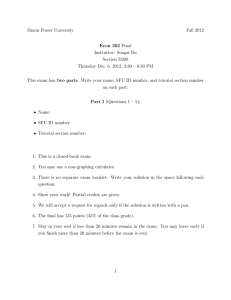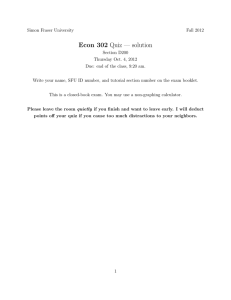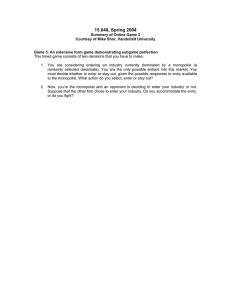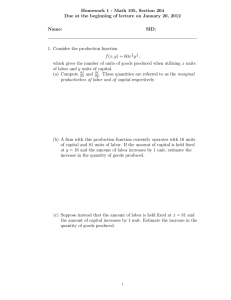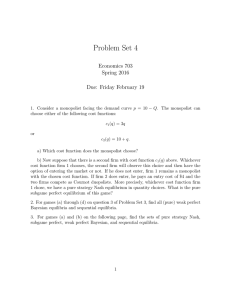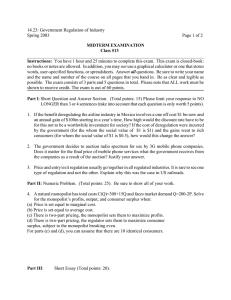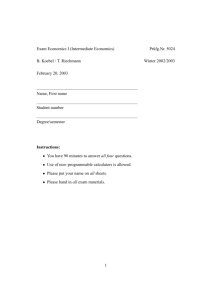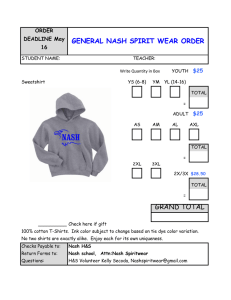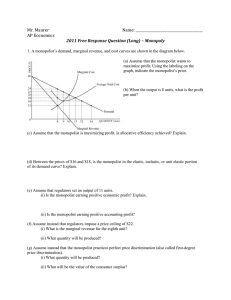Econ 302 Quiz
advertisement
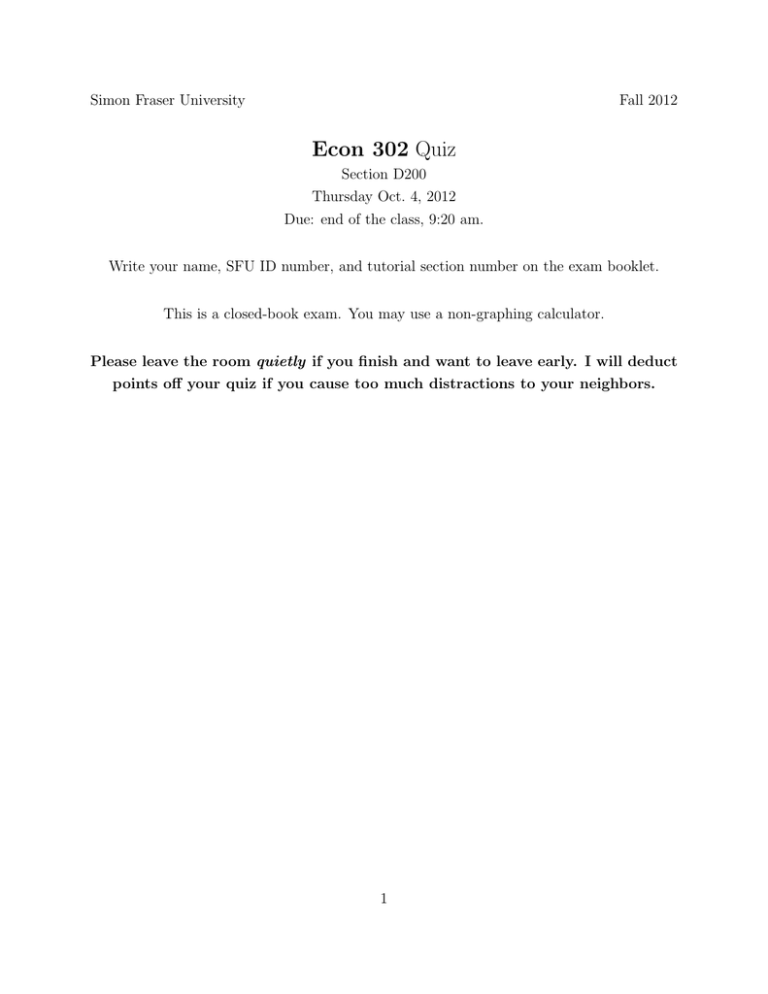
Simon Fraser University Fall 2012 Econ 302 Quiz Section D200 Thursday Oct. 4, 2012 Due: end of the class, 9:20 am. Write your name, SFU ID number, and tutorial section number on the exam booklet. This is a closed-book exam. You may use a non-graphing calculator. Please leave the room quietly if you finish and want to leave early. I will deduct points off your quiz if you cause too much distractions to your neighbors. 1 1. Multiple-choice / True-false (no penalty for wrong guesses) (a) (2 points) A mixed strategy is a/an (A) strategy profile, (B) action profiles, (C) probability distribution over actions, (D) collection of numbers over action profiles, or (E) none of the above. (b) (2 points) A Nash equilibrium (A) always involves strictly dominated actions, (B) may not exist in a finite game, (C) is a symmetric strategy profile, (D) makes a coarser prediction than ISD, or (E) none of the above. (c) (1 points) True or False: Quantity competition usually leads to a lower price than price competition. (d) (1 points) True or False: In a two-player game written out in the “matrix” form, Player 1 controls the columns, and Player 2 controls the rows. For Problem 2 to 4 show all your work. 2. (8 points) The market (inverse) demand function for a good is P (q) = 18 − q. There is a monopolist with a constant marginal cost of 2 for producing each unit of the good. Assume that the government imposes a sales tax of 50%, and the sales tax does not impact the monopolist’s cost. Calculate the monopolist’s price and quantity, and calculate the corresponding consumer’s price. 3. (8 points) For the following game, (a) find the strategies that survive iterated deletions of strictly dominated strategies (ISD), and (b) find all Nash equilibria (pure and mixed). W X Y Z A 1, 2 -1, 1 -1, 0 8, 2 B 0, 0 1, 1 -1, 0 7, 1/3 C 2, -1 -1, 0 1, 1 10, 1/3 D 5, 3/2 0, 1 -1/3, 4 8, 2 2 4. (8 points) The market (inverse) demand function for a good is P (q) = 18 − q. There are 7 firms, each with a constant marginal cost of 2 for producing each unit of the good. The 7 firms compete by setting their quantities of production, and the price of the good is determined by the market demand function given the total quantity. Calculate the symmetric pure-strategy Nash equilibrium in this game and the corresponding market price. 3
